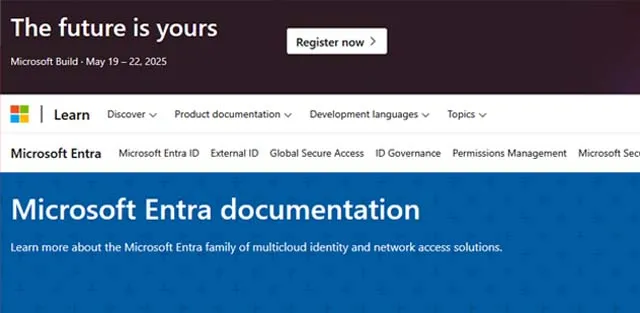Microsoft Entra Verified ID
Microsoft Entra Verified ID Face Check: Biometric Trust Tool

Microsoft Entra Verified ID empowers users to manage their data with verifiable credentials, offering secure, decentralized identity solutions. Explore tutorials, APIs, and setup guides to issue and verify credentials, customize them, and integrate Face Check, all detailed in the comprehensive documentation. Ideal for developers and businesses building privacy-focused identity systems.
Microsoft Entra Verified ID Face Check: Revolutionizing High-Assurance Identity Verification
What Is Microsoft Entra Verified ID Face Check?
Microsoft Entra Verified ID Face Check is a premium feature within the Microsoft Entra ecosystem, launched as part of Microsoft’s broader identity and access management suite. Unlike traditional authentication methods, Face Check introduces privacy-respecting facial matching to perform high-assurance identity verifications securely and at scale. Powered by Azure AI Vision Face API, it matches a user’s real-time selfie against a trusted photo from a verifiable credential, ensuring the person claiming an identity is genuine. Built for enterprises, this tool adds a critical trust layer without compromising user privacy, sharing only a confidence score rather than sensitive biometric data. It’s a cornerstone of Microsoft’s push into decentralized identity solutions, showcased at events like Microsoft Build.
How Does It Work?
Face Check leverages a cloud-based system integrating Microsoft Entra Verified ID with Azure AI services. It’s designed for seamless setup and use within enterprise tenants. Here’s a breakdown of its workflow:
- Setup: Enable the Face Check Add-on via the Microsoft Entra Admin Center or Azure Resource Manager (ARM) REST API, linking an Azure subscription.
- Credential Issuance: A verifiable credential (e.g., VerifiedEmployee or custom credential) with a photo is issued using tools like MyAccount or the Request Service API.
- Verification Request: An app sends a presentation request, specifying a photo claim and optional confidence threshold (50–100, default 70).
- Facial Matching: The user takes a selfie via Microsoft Authenticator, which is processed in the cloud against the credential’s photo using Azure Face API liveness checks.
- Result Delivery: A confidence score is returned to the app (e.g., 86.31%), with no raw biometric data shared. If below the threshold, verification fails with an error message.
This process ensures secure identity confirmation while keeping data ephemeral—selfies are discarded post-processing, not stored or shared.
Features
Face Check stands out with a robust set of capabilities, as detailed in Microsoft’s documentation and validated by its enterprise focus:
- Privacy-Respecting Matching: Shares only a confidence score, not biometric data, enhancing user privacy protection.
- High-Assurance Verification: Uses facial matching technology to confirm identities with precision, ideal for sensitive scenarios.
- Scalability: Supports enterprise-wide deployment via tenant-level configuration, handling verifications at scale.
- Customizable Thresholds: Adjust confidence levels (50–100) to balance security and usability in identity verification workflows.
- Liveness Detection: Prevents spoofing with Azure AI liveness checks, ensuring a real person is present.
- Integration Flexibility: Works with MyAccount, Authenticator, or custom credential APIs for versatile application.
Recent previews of the ARM REST API suggest ongoing enhancements to streamline setup and management.
Pros and Cons
Pros:
- Security: Bolsters trust with biometric verification at scale, reducing impersonation risks.
- Privacy: Protects users by not storing or sharing selfies, aligning with data privacy standards.
- Ease of Use: Simplifies setup via Admin Center or API, integrating with Microsoft Entra ecosystems.
- Versatility: Supports diverse credentials (e.g., VerifiedEmployee, government IDs) for multi-scenario authentication.
- Reliability: iBeta Level 2 conformance ensures resistance to presentation attacks.
Cons:
- Premium Cost: Requires a Face Check Add-on subscription, adding to enterprise identity costs.
- Setup Complexity: Needs Azure subscription linking and contributor roles, potentially daunting for smaller teams.
- Appearance Sensitivity: Changes in user appearance (e.g., haircuts) may lower scores, impacting verification success rates.
- Authenticator Dependency: Limited to Microsoft Authenticator, restricting non-Microsoft wallet compatibility.
- Preview Limitations: Some features, like ARM API, are in public preview, possibly with unresolved bugs.
Use Cases
Face Check’s versatility shines in real-world enterprise applications, with examples drawn from Microsoft’s documentation:
- Remote Onboarding: Verify new employees by matching selfies to HR-issued VerifiedEmployee credentials, enabling secure remote starts.
- Helpdesk Self-Service: Confirm identities for password resets or passkey activation using Face Check verification, cutting support time.
- High-Value Access: Secure access to sensitive data or transactions with trusted identity checks, ideal for finance or healthcare.
- Custom Credential Verification: Match selfies to custom credentials (e.g., contractor IDs) for tailored security protocols.
- Entitlement Management: Integrate with Microsoft Entra to validate user privileges via scalable biometric checks.
These scenarios highlight Face Check’s ability to replace manual verification, positioning it as a game-changer for enterprise trust and efficiency.
 Microsoft Entra Verified ID Reviews & Ratings: See What Users and Experts Are Saying
Microsoft Entra Verified ID Reviews & Ratings: See What Users and Experts Are Saying
 Summary
Summary
Microsoft Entra Verified ID Face Check marks a bold step in decentralized identity verification, blending Azure AI innovation with enterprise-grade security. Its ability to perform privacy-first facial matching at scale sets it apart from traditional biometric tools like Face ID, though its premium nature and setup requirements may limit broader adoption. For organizations needing high-assurance trust layers—from onboarding to sensitive access control—Face Check offers a glimpse into a future where identity is both secure and user-centric. Ready to explore? Enable it in your Microsoft Entra tenant and test it with MyAccount—your enterprise’s trust upgrade awaits.









